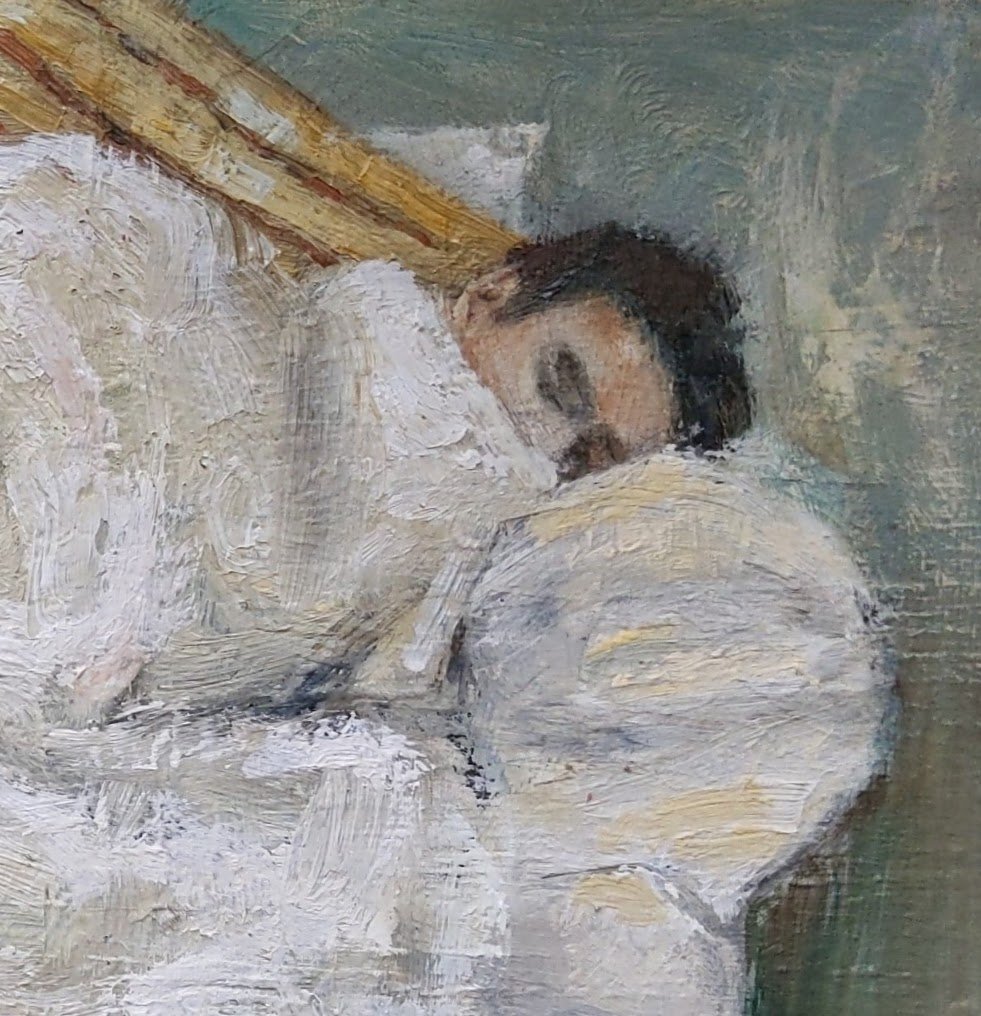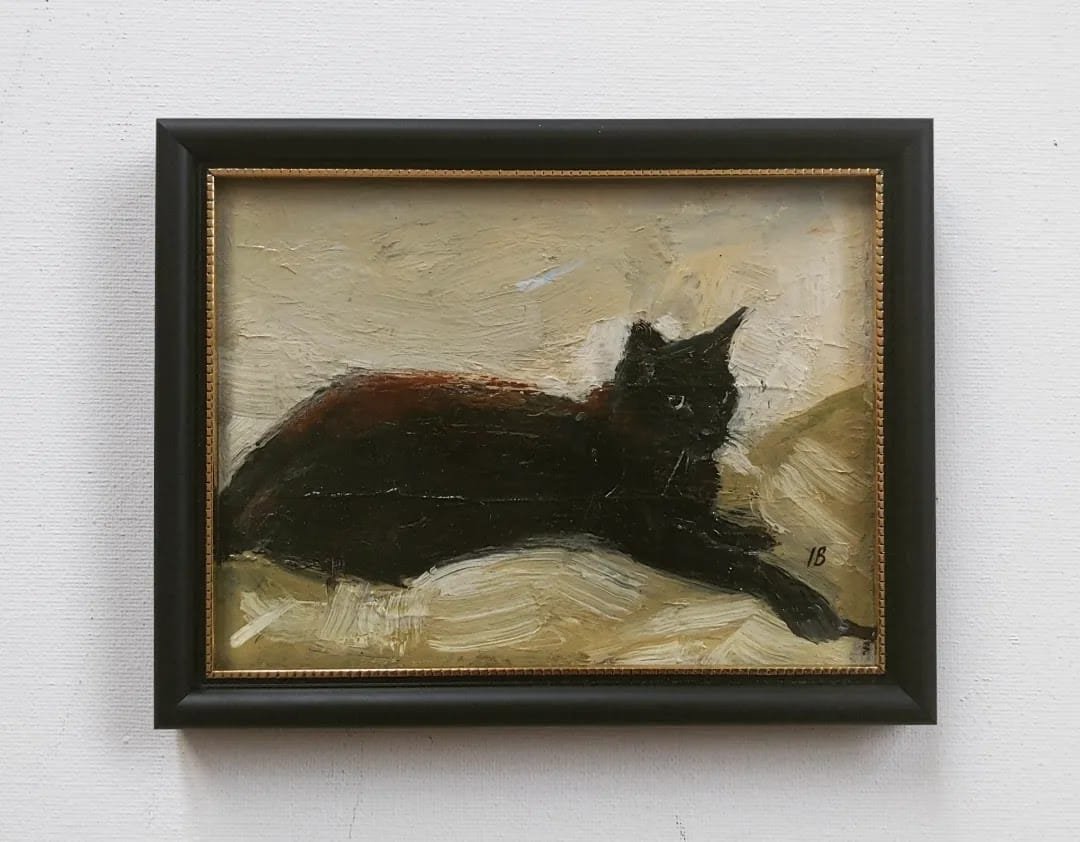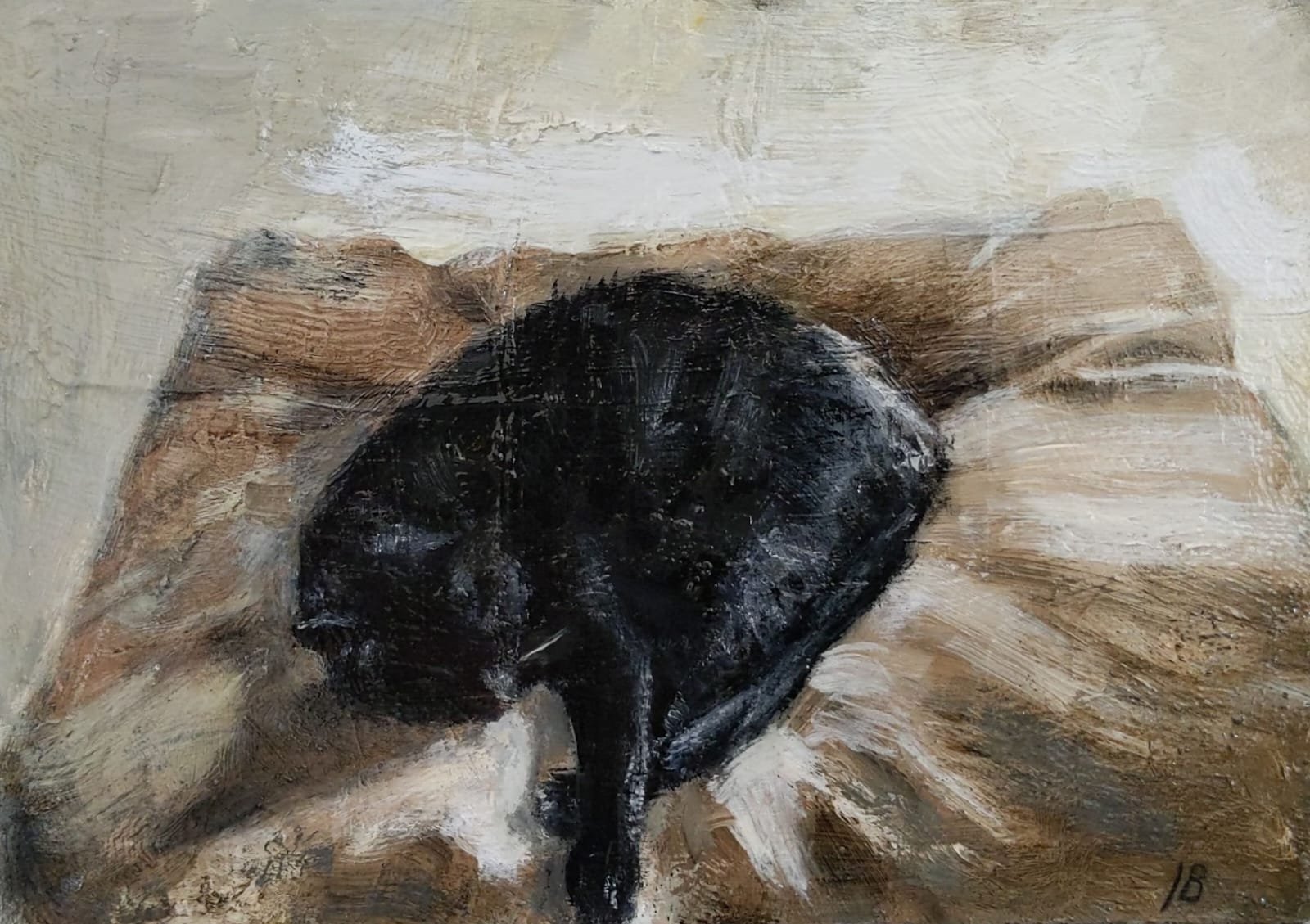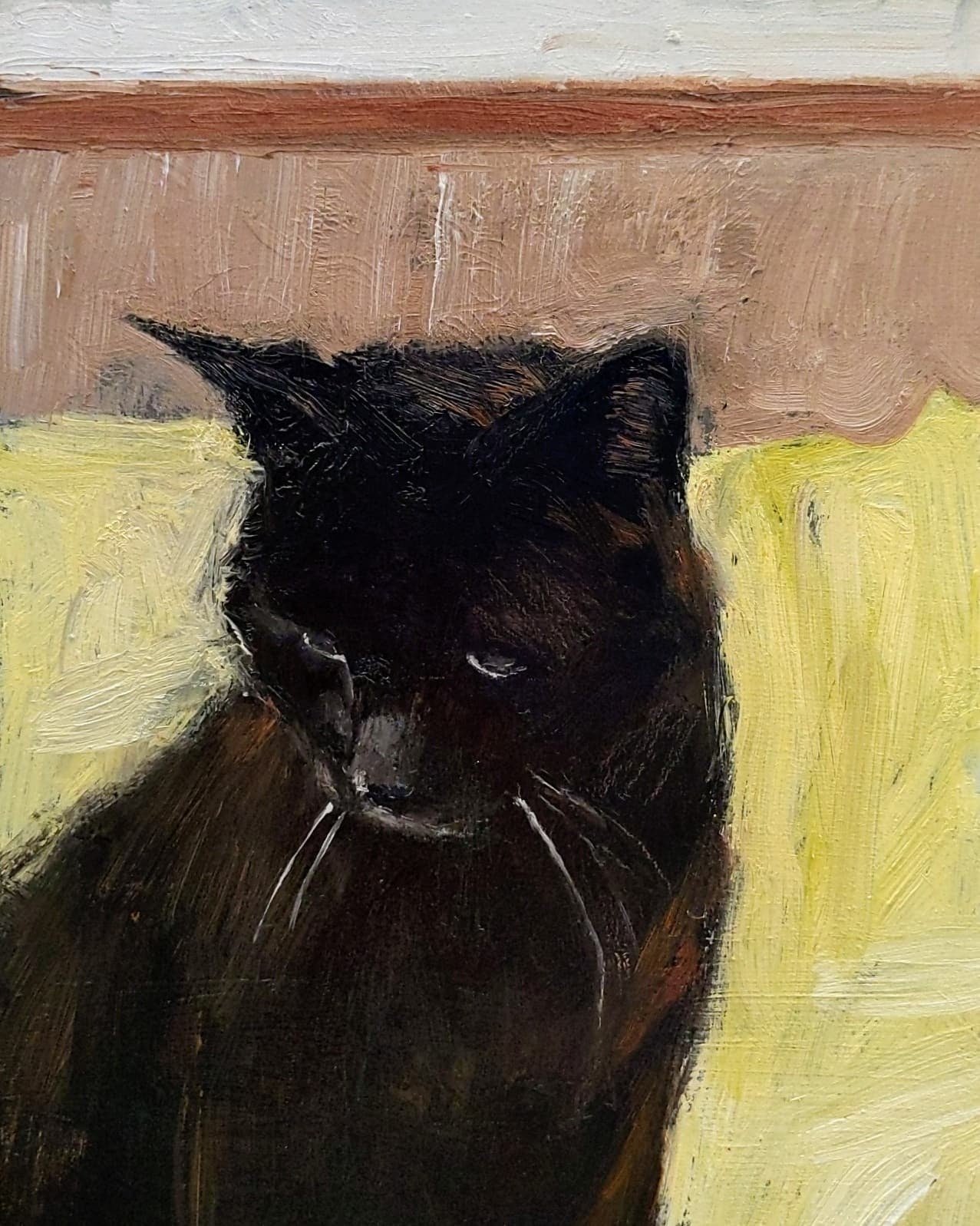ARTIST INTERVIEW: Ingrid Brown
Please give me an introduction to yourself. What inspired you to paint?
I always had a pencil or paintbrush in my hand when I was very young. My mother and father could draw and paint beautifully, although did not make it their 'living'. We did not have a lot of money but there were art pamphlets, books, pencils and paper all over the house. I recall an early memory when our local newspaper briefly had a free weekly supplement on the Impressionists and Old Masters. I adored these little booklets, pouring over the images of the light-filled, texture-rich artworks. From then on, and all throughout my youth, I was forever leafing through books, magazines, observing colours, patterns and textures, while scribbling and doodling (on everything!). When I started school (Grade 1), aged 5/6, my teacher put my painting of a ginger cat up on the classroom door. From that moment, although I did not fully understand it then, the feeling of making people happy through my paintings, and connecting with them, was something indescribable, and made a big impact on me all those years ago.
Describe your creative process; from start to finish of one of your works. Where do you find your inspiration?
I will have seen or experienced something that strikes me and either immediately set to work on it, or over time I will mull over it, revisit it, think about it. I might make some pencil sketches, and then start a colour sketch. I may finish it in one day or over a series of sessions. It all depends whether I can recognise the 'mood' I set out to capture. Sometimes I need some space from a piece before I know how to take it further. Once I recognise 'the thing I'm trying to capture', it's pretty much finished and I don't want to overwork it (or at least I try not to…!).
I mainly work with oils, and adore pastels, watercolour, graphite and charcoal. I make marks with palette knives, bristle brushes, soft brushes, found objects and even my fingers.
I have a lot of ideas and make regular use of small sketchbooks to get these ‘feelings’ out in visual form, as it’s better than having them swirling around in my mind. It’s wonderful and very liberating to see your ‘thoughts’ on paper. I’ll casually page through my sketches sometimes and consider making some into paintings, playing with the composition, or seeing something I hadn’t ‘seen’ previously.
When I start a painting, I’ll do a few light lines of thinned paint to set out the main elements of the subject matter, then start filling in larger blocks of colour. I’ll then break these down into finer elements, trying to be decisive about what I want to include. I don’t like to include everything, and try ask myself what elements stood out for me, to avoid getting stuck in too much detail, or overworking the painting.
My favourite compositions are typically the simplest. For example in my figurative work I like a background with only two or three colours or shapes in it, and I love to place the figure in a closely cropped format.
What is your favourite piece of work that you have created and why?
It would have to be the paintings that followed significant moments in my life. My Peak District paintings show the freedom and solace I found in grand nature, as it was the place I often visited following a bereavement in my family. It was all about the fresh air, fleeting light, energy of the weather, how it felt on my skin and in my hair; the seasons, colours and textures of nature, which was so rejuvenating and restorative for my soul.
My Cornish land and seascapes show my joy and exploration of a brand new setting when I moved here in 2020, one month before the World Lockdown, which we did not know just before moving. I loved experimenting with describing the unspoilt wild beauty of the dunes, beaches and hills on my doorstep (still do!), which provided such a great source of peace and balance during the Pandemic.
My 'black cat' paintings describe my relationship with an animal that became very close to my heart, whose little expressions, big soulful eyes and silent 'animal' emotions I absolutely loved trying capture in my works of him (Chester cat). He is sorely missed now, having recently passed away, and I would like to begin making some posthumous works of him soon.
My recent figurative and portrait works show people that are in, or have been, in my life: family, friends, acquaintances, people... and these are the paintings that represent the most special and meaningful pieces for me.
Who is your favourite artist and why? Do they have an influence on your work?
Many artists past and present influence my work. I admire an artist who can capture fleeting light, colour, movement, and ‘mood’, and particularly those artists who describe these elements with few details. That really hits my core. Why? Because it is like our memories - slightly blurry, but full of feeling and emotion, not highly detailed. And emotions are ephemeral, always moving, changing. If you can capture this in paint, it appears almost 'shimmering', or as if it is in motion, if not in terms of light, then colour and tone.
I admire Rembrandt for describing the human condition so deftly and sensitively in his pieces, and sense of drama owed to his skilled use of chiaroscuro. Turner, for his layers of depth and that atmospheric energy of his paintings – kind of serene and exciting at the same time. Cezanne for his brushwork, use of colour, texture, space and composition. I love Vuillard’s ‘stylish’ figurative compositions and use of light. These things can make a painting really juicy and sometimes I look at a great piece and think I could almost eat it! I could go on…
Do you get attached to your paintings? Is it hard to part with your paintings?
My heart, soul, and a lot of energy goes into all of my paintings. As a result I undoubtedly identify with all of them in some way. And yes, that may lead to my attachment to these pieces. But I am so proud when someone decides to take one of my pieces home with them, as it means they connected with something in my work, or there was something that struck their core. That's special and very moving. The feeling is pretty much priceless. It is beyond any selling price the painting could have.
What do you think makes your work unique?
Well, I guess my brushwork and use of colour somehow might show 'me'? Like all artists, each of our works are almost 'self-portraits’. Something latent in our technique perhaps shows ‘us’: our likes, preferences, tastes, afflictions even... and possibly makes its way out, through our choice of colour, line, form, shapes, compositions we choose.
Other than that, my subject matter generally shows where I'm at, and what I am going through, at various stages in my life.
In my teens, being conscious of the 'self' as we are at that age, I was very interested in painting figures and portraits. Later as an adult, after the bereavement of my lovely mother in my thirties, it was all about landscapes... the fresh air and nature that was the balm for my soul became the main subject of choice for my paintings.
Over the last couple of years, I returned to my first love of portraiture and figurative subject matter, mainly animals and people I know or have come into contact with. Along with this, I continue with the beauty of landscape and nature as this is fundamental to my happiness and something I experience on my daily walks.
So my work mainly shows me and my life, and where I’m at.
What has been your biggest achievement so far?
Recently, my biggest achievement is undoubtedly having had some of my artworks selected and hung in the Mall Galleries, London and St Ives (Penwith Gallery). That small girl in the 1980s would not have believed that one day her paintings would be hung in London and St Ives.
Prior to this, it would have to be achieving a distinction for my Grade 12 Painting Final Exhibition at the age of 18.
The most intriguing achievement, however, was back in 1991, albeit tinged with tragedy! I was 9 years old and overjoyed as I won a Portrait painting competition. I painted a ballet dancer in her final pose on stage, in acrylics. The winning pieces were put up in a lovely display in the town’s shopping mall. Unfortunately though, upon visiting the exhibition to see my winning work and retrieve my award, my mother and I were shocked to find just a blank space with the pin marks outlining where my painting was meant to be on the central board, above my name card. After speaking to the organisers, it turned out that someone stole my painting. Argh! We had never been able to trace it. I have still not gotten over that!!
Why do you think art is important in society?
Art is innately 'human', really. We need it. Humans will always be drawn to things that touch their soul - a form of visual beauty, profoundness, or just the sheer aesthetic value of something decorative. Art provides us with that, a kind of relief from the harshness that exists in the world.
Art has co-existed with us since the beginning of human existence. Whether it's a textured piece of fabric to adorn our sleeping spot, decorative marks made on a wall, anything.
It will always be important to us, in some form or another.

















